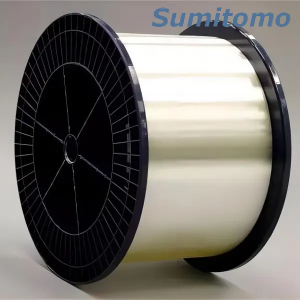Sumitomo B6.a2 SM The fiber optic industry has experienced significant developments, marking a transformational phase in the way fiber optic networks are designed, deployed and used in a variety of telecommunications and data transmission applications. This innovative trend has gained widespread attention and adoption for its ability to enhance data transmission capacity, reliability, and efficiency, making it a favored choice among telecommunications companies, network infrastructure providers, and data centers.
Sumitomo B6.a2 SM One of the key developments in the fiber optic industry is the integration of advanced materials and design features to improve signal transmission and network performance. Modern SM fiber is designed using high-quality, low-loss materials to provide excellent signal integrity and bandwidth capabilities. Additionally, these fibers are engineered to precise manufacturing standards, including bend-insensitive properties and enhanced splice performance, ensuring optimal data transmission and network reliability in demanding telecom and data center environments.
Additionally, a focus on scalability and future-proofing has driven the development of single-mode fiber optics to meet the growing demands for high-speed data transmission and network expansion. Manufacturers are increasingly ensuring that Sumitomo B6.a2 SM optical fiber is designed to support higher data rates, longer transmission distances and compatibility with emerging network technologies, providing network operators and data center managers with adaptability Changing connectivity demands flexibility. This focus on scalability makes single-mode fiber an essential component for the telecommunications and data transmission industries to build robust and future-proof optical networks.
Additionally, the customizability and adaptability of Sumitomo B6.a2 SM fiber makes it a popular choice for a variety of network deployments and connectivity applications. These fibers are available in a variety of configurations, including single-mode and bend-insensitive variants, to meet specific network design requirements, whether long-haul transport, metro networks or high-density data center interconnects. This adaptability enables telecommunications companies, network infrastructure providers and data center operators to optimize the performance and reliability of their optical networks and solve a variety of data transmission and connectivity challenges.
As the industry continues to witness advancements in materials, scalability and network performance, the future of Sumitomo B6.a2 SM fiber seems promising, with the potential to further enhance the capacity and reliability of optical networks in different telecommunications and data transmission sectors.

Post time: Jun-14-2024